Partner Spotlight: Dale Strickler
By Linda Poole, Regenerative Grazing Specialist
As most of the U.S. staggers through drought – and other areas are deluged by floods – the Soil for Water team scouts for practical solutions to water woes. And we found them in Dale Strickler’s book, “The Drought Resilient Farm.”
Dale Strickler knows drought. A sixth-generation Kansas farmer, he’s felt the despair of watching crops wither long before harvest, and he’s done the grim math to decide whether to sell his cows or buy over-priced feed when his pastures turned to dust. He’s seen more than a few farms fail and families fall apart in dry, hot, desperate times.
“The Dust Bowl isn’t just a sad chapter of America’s history. It’s happening again now, and it’s shaping up to be even worse this time around,” said Dale during a recent call. “The deserts of the Middle East were once grasslands teeming with life, and with poor choices our Great Plains could become desert too. But it absolutely doesn’t have to go that way. Through our farming practices, we can create our own droughts – or we can create abundance. We set the stage for our future by how we treat our soil today.”
Strickler is an educator, author, and professional agronomist (BS and MS from Kansas State University) who consults internationally on sustainable farming. His 2018 book The Drought Resilient Farm details myriad ways to restore soil biology, build resilience to droughts and floods, and create enduring health, wealth, and happiness for farmers.
Far better than a Google list of every trendy tool and technique available today, Strickler’s book delivers the nitty-gritty on dozens of the most promising ways to build resilience into your farm. He’s done the exhaustive research necessary to find all the options and innovations – and then he’s implemented many of the practices himself. For any practices Dale hasn’t tried, he’s interviewed farmers around the world who have. This grounded approach is invaluable because how many ideas sound great until you give them a try in the real world?
And Strickler isn’t shy about saying some things don’t live up to popular hype: Whenever the subject of improving root depth comes up, the first thing that tends to pop into a farmer’s mind is getting out their biggest tractor, hooking it onto a subsoiler, and tearing the soil up just as deep as they possibly can. Surprisingly, subsoiling is largely ineffective at improving rooting depth. (pg. 68)
The book is chockfull of farm-tested, cost-effective approaches that, when taken together, fully deliver on the promise of the book’s front cover to Improve your soil’s ability to hold and supply moisture for plants. Maintain feed and drinking water for livestock when rainfall is limited. Redesign agricultural systems to fit semi-arid climates.
But this blog post isn’t really a book report! As soon as the Soil for Water team read Strickler’s book, we knew we needed to share his expertise and ideas directly with all of you! Dale embodies the Soil for Water commitment to promoting practical, producer-proven methods to catch and hold more water in soils, so we are ecstatic that Dale has agreed to present a webinar and workshop series for us based on his books, which also include Managing Pastures (2019) and The Complete Guide to Restoring Soil (2021).
These participatory learning opportunities will be offered in late summer 2022 at no cost to Soil for Water network members, thanks to funding provided by a NRCS grant to Soil for Water. We’ll share an invitation and details soon at SOILFORWATER.ORG.
To whet your appetite for the savvy that Dale will share in his upcoming events, here are some gems gleaned from my recent chat with him:
My part of Kansas averages 36” of moisture a year, but this is really just a desert where it floods a lot. Our water comes mostly from intense thunderstorms, and there’s no telling when the next rain might fall. By restoring soil, I capture every raindrop that hits my farm, and I store it in place for the plants to use when they need it. This ability to store water – and to keep it from flooding away nutrients and topsoil – is priceless for farmers across the US.
In 15 years, I brought my soil organic matter up from 1.9% to 8.7%, and grass roots now stretch down at least 9 feet deep. By restoring soil health, we not only make the most of the land and water we have – people can double or triple or quadruple their profits this way! – but we also create conditions that can moderate local weather extremes. And that’s good for everyone!
Some people say ag causes climate change, that cow burps are killing the planet. I don’t want to argue about that. I will say that ag can be a big part of the solution to climate problems. Things that get plant roots pumping exudates to the soil microbes as long as possible every year – practices like minimizing tillage, growing cover crops, and rotationally grazing livestock – these things build resilience in our businesses and communities in the most environmentally friendly and biologically efficient way possible.
We should be looking critically at what we can we do better. Don’t make decisions based on advice from someone trying to sell you something. Go out and educate yourself – it’s easier to do that now than ever before. And try things out, experiment to see how a new idea might work in your operation. If you’re farming 1,000 acres, you won’t lose the farm if an experiment flops on 10 acres. And if it does work, just imagine what a difference that could make if done across your property!
In 2000 I bought an irrigated corn and soybean farm in Kansas. I farmed conventionally but made some minor changes to reduce tillage and add some cover crops. This made a lot of money for the seed dealer, the fertilizer dealer, the chemical dealer, and the equipment dealer. Everyone was profiting but me, my family, and my soil. So, I decided I was going to learn to farm differently so my children could inherit something other than debt and dead soil.
Want to learn more about how Dale changed things up to restore resilience, profitability, and joy to his farming operation? Visit his website, buy his books, and check out his many videos (such as Restoring the Skin of the Earth and The Complete Guide to Restoring Your Soil). And be sure to check back here soon to register for Dale’s powerful Soil for Water workshop series on how you can build your own drought resilient farm!

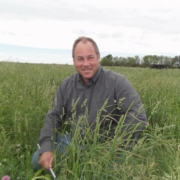
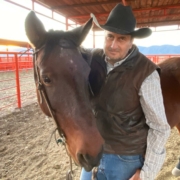
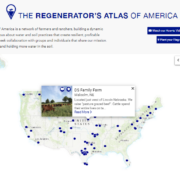
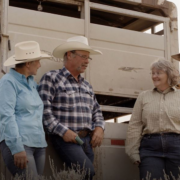
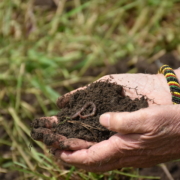
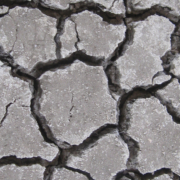 NCAT
NCAT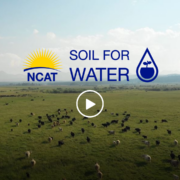


 Canva Pro
Canva Pro